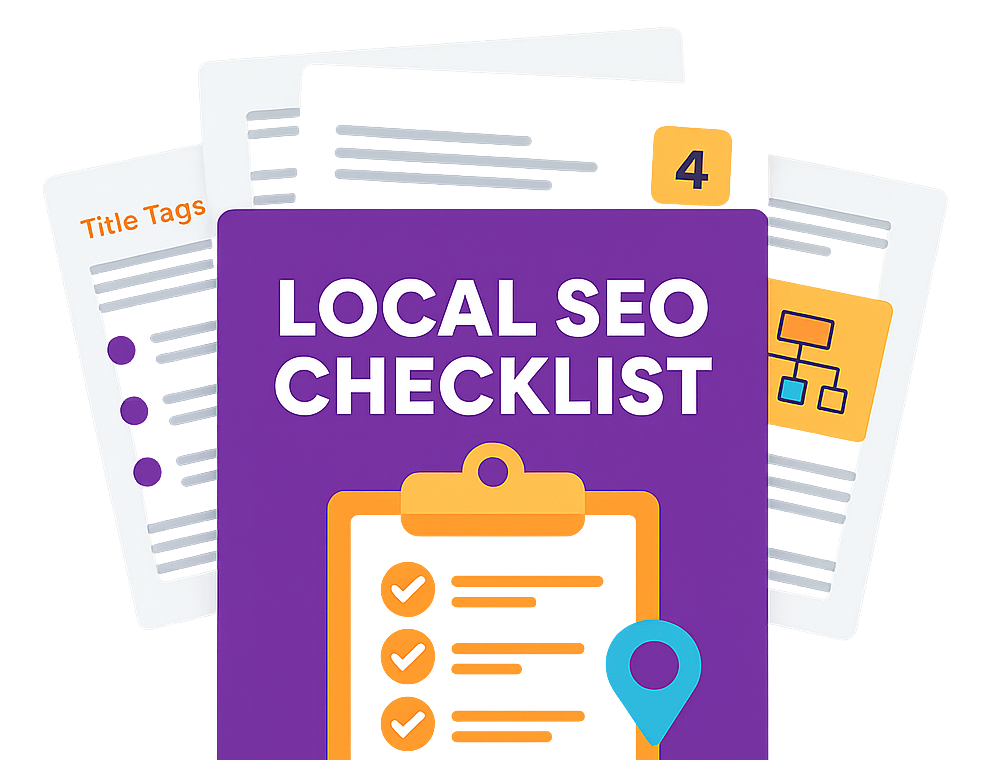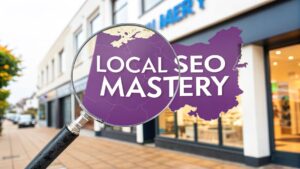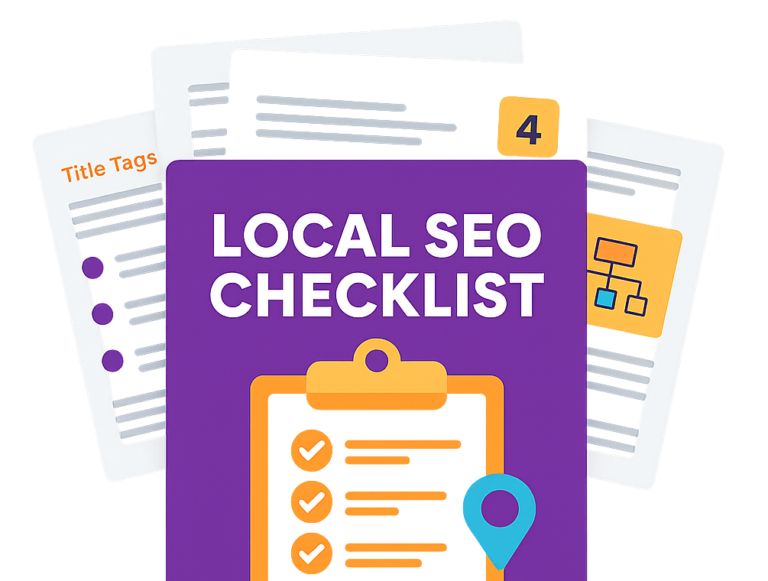In a digital marketplace saturated with information, simply creating more content is a flawed strategy. To cut through the noise and capture the attention of your target audience, from SMEs in Cambridgeshire to national e-commerce brands, a strategic, disciplined approach is non-negotiable. The difference between content that vanishes and content that converts lies in applying proven content marketing best practices that prioritise value, engagement, and measurable results.
This guide moves beyond generic advice to provide a detailed blueprint for modern content marketing success. We will break down the nine foundational pillars that transform a content programme from a simple publishing schedule into a powerful engine for business growth. You will learn how to build a deep understanding of your customers, create content that educates and resonates, and optimise every asset for maximum reach and impact.
We’ll explore the specific, actionable tactics needed to implement each practice, complete with practical examples relevant to UK businesses. Whether you’re a local service provider aiming to attract nearby customers or a marketing manager looking to enhance your organisation’s strategy, mastering these principles is essential. By the end of this article, you will have a clear framework to build authority, foster a loyal community, and turn your content investment into a reliable, revenue-generating asset.
1. Master Your Audience with In-Depth Buyer Personas
The foundation of all successful content marketing best practices is a profound understanding of who you are trying to reach. Moving beyond generic demographics, creating in-depth buyer personas is a strategic process of building a detailed, semi-fictional representation of your ideal customer. This involves documenting their professional roles, daily challenges, motivations, and information consumption habits.

Instead of creating content for a vague, faceless market, you craft messages specifically for “Marketing Mary” or “Startup Steve”. This clarity transforms every stage of your content workflow. It guides topic ideation towards solving their specific pain points, shapes your tone of voice to match their communication style, and dictates which channels you use to distribute your content for maximum impact.
How to Implement Buyer Personas Effectively
To build and leverage personas, you need a mix of qualitative and quantitative data. This approach ensures your personas are grounded in reality, not just assumptions.
- Conduct Customer Interviews: Speak directly to your best customers. Ask open-ended questions about their goals, challenges, and how they found your solution. This provides invaluable qualitative insights.
- Analyse Your Data: Use Google Analytics, CRM data, and social media analytics to gather quantitative information on demographics, behaviour, and engagement patterns. This data validates the stories you hear in interviews.
- Develop Negative Personas: Just as important as knowing who you are targeting is knowing who you are not. A negative persona (e.g., “Student Sam” who uses your free tools but will never buy) helps you avoid wasting resources on audiences that won’t convert.
- Centralise and Share: Don’t keep your personas in a silo. Use tools like HubSpot’s persona templates to create a centralised document. Ensure it’s shared and actively used by your marketing, sales, and customer service teams to maintain a consistent customer experience.
- Schedule Regular Reviews: Markets evolve, and so do your customers. Schedule quarterly or bi-annual reviews to update your personas based on new data and business insights, keeping them relevant and accurate.
2. Create Valuable, Educational Content
One of the most powerful content marketing best practices is shifting focus from self-promotion to genuine education. This approach involves creating content that helps your audience solve problems, learn new skills, or make better decisions. Instead of a direct sales pitch, you build trust and establish your brand as a credible industry authority, subtly showcasing your expertise and making your solution the logical choice when they are ready to buy.

This strategy, famously popularised by Marcus Sheridan’s “They Ask, You Answer” methodology, is built on addressing your customers’ most pressing questions. Think of Moz’s comprehensive SEO guides or Buffer’s insightful social media strategy blog. These resources are valuable in their own right, attracting an audience by providing solutions, not just products. This builds a loyal following that sees your brand as a partner in their success.
How to Implement Educational Content Effectively
To create content that truly educates and engages, you must prioritise your audience’s needs over your own marketing messages. This requires a systematic approach to identifying and addressing their key concerns.
- Address Customer FAQs: Collaborate with your sales and customer service teams to list the most common questions they receive. Turning these queries into detailed blog posts, guides, or videos is a direct way to provide value.
- Use Data and Case Studies: Back up your educational points with hard evidence. Data, research, and detailed case studies add weight and credibility to your content, proving your advice works in real-world scenarios.
- Break Down Complex Topics: Don’t overwhelm your audience. Deconstruct large, complicated subjects into a series of digestible articles, videos, or social media posts. This makes the information more approachable and keeps people coming back for the next instalment.
- Include Actionable Takeaways: Every piece of content should empower the reader to do something. End with clear, actionable steps, checklists, or templates they can implement immediately. As you focus on creating valuable and educational content, consider leveraging powerful tools like AI content generators to streamline your process.
- Repurpose Across Formats: A single educational topic can be repurposed into multiple formats. A detailed guide can become an infographic, a webinar can be edited into short video clips, and key stats can be shared as social media graphics, maximising your reach and catering to different learning preferences.
3. Maintain Content Consistency and Quality
Consistency is the engine that drives trust and builds a loyal audience in content marketing. Establishing a reliable publishing schedule, maintaining a uniform brand voice, and upholding quality standards across all channels are non-negotiable content marketing best practices. This consistency demonstrates professionalism and reliability, teaching your audience when and what to expect from your brand.

Think of Seth Godin’s daily blog, a masterclass in relentless consistency for over two decades, or National Geographic’s unwavering commitment to exceptional visual storytelling. When your content is consistently valuable and recognisable, you build brand equity and become a trusted resource rather than just another voice in the noise. This reliability is what transforms casual readers into dedicated followers and, ultimately, customers.
How to Implement Content Consistency and Quality
Achieving this level of consistency requires a structured, process-driven approach. It’s about building systems that make quality and regularity the default outcome, not a happy accident.
- Create Detailed Style Guides: Develop a comprehensive brand style guide that documents your tone of voice, grammar rules, visual identity (colours, fonts), and formatting standards. This is your brand’s constitution for all content creators.
- Establish an Editorial Calendar: Use a tool like Asana, Trello, or a simple spreadsheet to plan, schedule, and track your content. An editorial calendar provides a single source of truth for your entire team and ensures a steady flow of content.
- Develop Content Templates: For recurring content formats like blog posts, case studies, or social media updates, create templates. This streamlines the creation process, reduces errors, and ensures structural and visual consistency every time.
- Use Quality Checklists: Before any piece of content goes live, run it through a pre-publication checklist. This should include checks for spelling and grammar, brand voice alignment, SEO optimisation, and factual accuracy.
- Batch Your Content Creation: Dedicate specific blocks of time to create multiple pieces of content at once. This “batching” method improves efficiency and helps maintain a consistent tone and quality across a series of posts or videos.
4. Tell Compelling Stories
Facts and figures inform, but stories connect and persuade. A crucial element of modern content marketing best practices is the art of storytelling, which transforms dry information into memorable, engaging, and relatable narratives. This involves weaving your brand’s message, values, and solutions into a structured story that resonates with human psychology, creating a much deeper and more lasting connection with your audience than a simple list of features.

Instead of just selling a product, you are sharing a journey. Think of how Patagonia frames its products within a larger narrative of environmental activism or how Nike tells the powerful stories of athletes overcoming adversity. This approach makes your brand more than a provider; it becomes a character in your customer’s own story, building loyalty that transcends price and features. For inspiration, exploring top brand storytelling examples can help refine your narrative approach and connect deeply with your audience.
How to Implement Storytelling Effectively
Integrating narrative into your content requires a strategic framework. It’s about finding the human element in your business and presenting it in a structured way that guides the audience to a clear conclusion.
- Use the Hero’s Journey: Position your customer as the hero of the story. Your brand acts as the guide or mentor who provides them with the tool or plan (your product/service) they need to overcome a challenge and succeed.
- Structure with Conflict and Resolution: A good story needs a clear beginning (the customer’s problem), a middle (the struggle and their interaction with your brand), and an end (the successful resolution). This structure keeps the audience engaged.
- Incorporate Sensory Details: Make your stories vivid. Instead of saying a customer “saved time,” describe what they did with those extra hours. Use descriptive language to help your audience see, hear, and feel the experience.
- Leverage Different Formats: Storytelling isn’t limited to text. Use video testimonials, podcast interviews with customers, or even animated case studies to tell your brand’s story across various channels, enhancing its impact.
- Weave in Brand Values: Your stories should be an authentic reflection of what your company stands for. If sustainability is a core value, tell stories about how your processes or materials make a positive environmental impact. This builds trust and attracts like-minded customers.
5. Optimise for Search Engines (SEO)
Creating outstanding content is only half the battle; ensuring it gets discovered is the other. This is where search engine optimisation (SEO) becomes an indispensable component of your content marketing best practices. SEO is the strategic process of refining your content and website to improve visibility in search engine results, driving targeted organic traffic from users actively seeking solutions you provide.
Integrating SEO isn’t just about appeasing algorithms; it’s about aligning your content with user intent. When you understand what your audience is searching for, you can create resources that directly answer their questions, establishing your brand as a helpful authority. Companies like HubSpot master this by building comprehensive topic clusters and pillar pages that dominate search results for their industry, demonstrating how SEO-driven content builds lasting authority and attracts high-quality leads.
How to Implement SEO Effectively
A successful SEO strategy requires a multifaceted approach, blending technical precision with creative, user-focused content creation. For those new to the field, a comprehensive beginner’s guide to search engine optimisation can provide a solid foundation.
- Focus on Long-Tail Keywords: Target highly specific, multi-word phrases (e.g., “best accounting software for UK small business”) that indicate stronger commercial intent. These keywords often have lower competition and attract more qualified traffic.
- Create Pillar Pages and Topic Clusters: Organise your content by building a central “pillar” page covering a broad topic, then link out to more detailed “cluster” articles on related sub-topics. This structure signals expertise to search engines and improves user navigation.
- Optimise for Rich Results: Structure your content to win featured snippets, “People Also Ask” boxes, and other rich results. Use clear headings, bullet points, and numbered lists to provide direct answers to common questions.
- Regularly Update Existing Content: SEO is not a one-time task. Regularly refresh and update your older posts with new information, data, and keywords to maintain their relevance and ranking power over time.
- Monitor Performance and Adapt: Use tools like Google Search Console and Google Analytics to track your organic traffic, keyword rankings, and click-through rates. Analyse this data to identify what’s working and where you need to adjust your strategy.
6. Leverage Multiple Content Formats
Relying on a single content format, like blog posts, is a missed opportunity in today’s diverse digital landscape. One of the most impactful content marketing best practices is to diversify your content into multiple formats. This strategy acknowledges that your audience has different preferences for consuming information; some prefer reading, others watching videos, and many listen to podcasts during their commute.
By repurposing a core idea across various media like videos, infographics, webinars, and social media carousels, you maximise your reach and engagement. This approach, popularised by figures like Gary Vaynerchuk, isn’t about creating more work; it’s about working smarter by multiplying the value of a single, strong piece of content. This ensures your message resonates across different platforms and with various segments of your audience, reinforcing your authority and brand presence.
How to Implement a Multi-Format Strategy
Effectively diversifying your content requires a systematic approach to ensure consistency and efficiency. It’s about adapting your core message to fit the unique strengths of each format and platform.
- Start with a Pillar Piece: Begin with a comprehensive piece of content, such as an in-depth guide, a research report, or a webinar. This “pillar” will serve as the source material for all other formats, ensuring a consistent core message.
- Repurpose Strategically: Break down your pillar content into smaller, format-specific assets. A webinar can become a series of short video clips for social media, a summary blog post, an audiogram for a podcast feed, and a key-takeaway infographic.
- Match Format to Platform: Align your content format with the platform where it will be distributed. For example, visually-driven infographics and short videos excel on Instagram and Pinterest, while detailed articles and case studies perform well on LinkedIn and your company blog.
- Systemise Your Creation Process: Develop templates and standardised workflows for each content format. This drastically reduces production time and helps maintain brand consistency across videos, graphics, and written content, which is vital for SMEs with limited resources.
- Link Your Assets: As you create this web of content, it is crucial to connect them. Using smart internal linking strategies not only improves user experience by guiding them to related content but also signals content relationships to search engines. For a deeper understanding, explore internal linking strategies for SEO on bare-digital.com.
7. Use Data and Analytics for Decision Making
One of the most powerful content marketing best practices is shifting from assumption-driven to evidence-based strategies. By implementing comprehensive measurement and analysis, you can transform your content from a creative exercise into a predictable driver of business growth. This means using hard data to guide every decision, from topic selection to channel optimisation and demonstrating return on investment.
This data-driven approach allows you to understand precisely what resonates with your audience and what doesn’t. For example, Netflix famously uses its vast trove of viewing data to inform its original content strategy, while Buffer leverages transparent analytics to make continuous, data-backed improvements to its content. This methodology ensures your resources are channelled into activities with the highest probability of success.
How to Implement Data-Driven Decision Making
Effectively using data requires a structured process of tracking, analysing, and acting upon insights. This turns raw numbers into strategic advantages for your content marketing efforts.
- Set Up Robust Tracking: Before launching any campaign, ensure your tracking is correctly configured. This includes setting up goals in your analytics platform, implementing event tracking for key interactions like downloads or video plays, and using UTM parameters to accurately attribute traffic sources.
- Focus on Business-Centric Metrics: Vanity metrics like page views are interesting, but focus on metrics that directly align with your business objectives. Track conversion rates, lead quality, customer lifetime value (CLV) from content-generated leads, and content-assisted revenue.
- Establish a Reporting Cadence: Create a schedule for reviewing your data, whether weekly, monthly, or quarterly. Regular analysis helps you spot trends, identify underperforming content, and double down on what works, ensuring continuous optimisation.
- Combine Quantitative and Qualitative Data: Numbers tell you what is happening, but qualitative feedback (from surveys, customer interviews, or comments) tells you why. Combine analytics data with user feedback for a complete picture.
- Explore Advanced Analytics Tools: While a primary analytics platform is essential, exploring alternatives can provide deeper insights. You can find out more about the different platforms available when you learn more about Google Analytics alternatives.
8. Build and Nurture Community
Truly effective content marketing best practices go beyond one-way broadcasting and cultivate a loyal, engaged audience. Building a community involves creating a dedicated space where customers, fans, and prospects can connect with your brand and, more importantly, with each other. This transforms your content from a monologue into a dynamic, two-way conversation that fosters deep relationships and creates powerful brand advocates.
Instead of just pushing out information, you are facilitating connections and shared experiences. Brands like Salesforce with its Trailblazer Community or Peloton with its integrated social fitness groups show how this works. They provide a platform where users can ask questions, share successes, and offer support, all centred around the brand’s ecosystem. This sense of belonging is a powerful driver of long-term loyalty and organic growth.
How to Implement Community Building Effectively
A successful community requires consistent effort and a genuine commitment to providing value beyond your core products or services. It is about nurturing relationships, not just managing a platform.
- Choose the Right Platform: Decide where your community will live. This could be a dedicated forum on your website, a private Facebook group, a Slack or Discord channel, or even regular in-person or virtual events. The key is to choose a space where your audience already feels comfortable.
- Share and Celebrate User-Generated Content (UGC): Actively encourage and showcase content created by your members. When you celebrate their contributions, such as in Adobe’s Creative Community, it validates their participation and inspires others to get involved, creating a self-sustaining content engine.
- Provide Exclusive Value: Give your community members a reason to be there. Offer exclusive content, early access to new products, special Q&A sessions with experts, or unique discounts. This makes them feel like valued insiders.
- Facilitate Member-to-Member Connections: Your role is often that of a facilitator. Pose questions, start discussions, and create challenges that encourage members to interact with one another. This builds stronger, more resilient community bonds.
- Establish and Enforce Clear Guidelines: A safe and respectful environment is non-negotiable. Develop clear community guidelines and moderate consistently to ensure all interactions are positive and productive. This protects your members and your brand reputation.
9. Collaborate with Influencers and Partners
Creating exceptional content is only half the battle; ensuring it reaches the right audience is the other. One of the most effective content marketing best practices is to develop strategic partnerships with industry influencers, complementary brands, and thought leaders. This approach allows you to tap into established, engaged communities, lending your brand instant credibility and expanding its reach exponentially.
Instead of slowly building an audience from scratch, you leverage the trust and authority that partners have already cultivated. A collaboration, such as a co-hosted webinar with a respected expert or a product feature by a trusted influencer, introduces your brand to a warm audience predisposed to listen. This strategy amplifies your content’s impact, drives qualified traffic, and opens doors to new market segments you might not otherwise reach.
How to Implement Partnerships Effectively
A successful collaboration is built on mutual value and clear communication. It’s about building relationships, not just executing transactions.
- Identify Aligned Partners: Prioritise relevance over reach. Use tools like SparkToro or BuzzSumo to find influencers and brands whose audience perfectly matches your buyer personas. A partner with a smaller, highly engaged, niche audience is often more valuable than one with a huge, generic following.
- Establish Clear Guidelines: Before launching a collaboration, create a clear brief. Outline goals, deliverables, timelines, compensation (if any), and performance metrics. This prevents misunderstandings and ensures both parties are aligned on what success looks like.
- Focus on Long-Term Relationships: Aim to build lasting partnerships rather than one-off campaigns. Nurturing a relationship over time leads to more authentic endorsements and ongoing opportunities for mutually beneficial content creation, creating a powerful network effect.
- Provide Mutual Value: A great partnership benefits everyone. Offer your partners value beyond simple payment. This could include access to your audience, providing them with unique data for a report, or co-creating a resource that enhances their authority.
- Track and Measure ROI: Define what you want to achieve, whether it’s brand awareness, lead generation, or sales. Use unique tracking links, promo codes, and dedicated landing pages to measure the performance of each collaboration. Analysing this data helps refine your strategy for future partnerships and can be a great way to learn how to build high-quality backlinks.
9 Essential Content Marketing Best Practices Comparison
| Strategy | Resource Requirements | Expected Outcomes | Ideal Use Cases | Key Advantages |
|---|---|---|---|---|
| Know Your Audience Through Buyer Personas | Significant time and data gathering | Increased content relevance and engagement | Targeted marketing, personalised messaging | Reduces wasted resources, improves conversion |
| Create Valuable, Educational Content | Research, content creation expertise | Builds brand authority and long-term trust | Thought leadership, problem-solving content | Drives organic traffic, enhances SEO |
| Maintain Content Consistency and Quality | Time and editorial resources | Builds audience trust and brand recognition | Brands focusing on reliability and professionalism | Improves SEO and engagement, enables workflow |
| Tell Compelling Stories | Skilled storytellers, content creators | Higher emotional engagement and sharing | Brand storytelling, emotional branding | Differentiates content, strengthens brand bond |
| Optimise for Search Engines (SEO) | SEO tools, continuous effort | Increased organic traffic and visibility | Content needing discoverability and lead gen | Long-term traffic growth, targeted audience reach |
| Leverage Multiple Content Formats | Multi-disciplinary teams, tools | Broader reach and improved engagement | Multi-platform content strategies | Maximises ROI, caters to varied audience preferences |
| Use Data and Analytics for Decision Making | Analytics tools and expertise | Evidence-based optimisation and clear ROI | Performance-driven content strategies | Enhances decision making, optimises budget |
| Build and Nurture Community | Community managers, social media tools | Strong brand loyalty and user-generated content | Brands focused on engagement and advocacy | Organic reach, direct feedback, referral growth |
| Collaborate with Influencers and Partners | Time for outreach, possible costs | Expanded reach and enhanced credibility | Audience expansion, credibility building | Reduces workload, adds fresh perspectives |
Putting Your Content Marketing Plan into Action
We have journeyed through nine cornerstone principles that form the foundation of a robust and effective marketing strategy. From the granular detail of crafting detailed buyer personas to the broad-stroke vision of building a vibrant community, these are not just disparate tips but interconnected gears in a powerful engine for business growth. Mastering these content marketing best practices is an ongoing process of refinement and adaptation, not a one-time task to be checked off a list. The real magic happens when these elements are woven together into a cohesive, cyclical strategy: plan, create, distribute, measure, and then repeat, each time with greater insight.
The path from understanding these concepts to implementing them successfully can seem daunting, especially for busy entrepreneurs and marketing managers in competitive UK markets like Cambridgeshire. The key is to avoid becoming overwhelmed. Instead of attempting to revolutionise your entire marketing operation overnight, focus on incremental, strategic improvements. Start with an honest audit of your current activities against the nine pillars we’ve discussed. Where are the most significant gaps? Perhaps you produce excellent content but neglect SEO, leaving it undiscovered. Or maybe your distribution is strong, but your content lacks the narrative depth to truly connect with your audience.
From Theory to Tangible Results
Let’s break down how to transition from theory to action. The true value of adopting these content marketing best practices lies in creating a self-reinforcing system where each element supports the others.
- Integrated Strategy: Your detailed buyer personas (Practice #1) should directly inform the valuable, educational topics you choose (Practice #2) and the compelling stories you tell (Practice #4).
- Quality and Reach: Maintaining content consistency (Practice #3) builds trust, while optimising for search engines (Practice #5) ensures your quality work is actually found by those who need it most.
- Engagement and Expansion: Leveraging multiple content formats (Practice #6) caters to diverse audience preferences, while using data and analytics (Practice #7) provides the feedback loop necessary to refine your approach. This data-driven insight helps you understand what resonates, allowing you to build and nurture a community (Practice #8) more effectively.
- Amplification and Authority: Finally, strategic collaborations with partners (Practice #9) can amplify your reach and lend third-party credibility to your brand, introducing your powerful, optimised content to new, relevant audiences.
Think of it as building a flywheel. Each practice you implement adds momentum. Initially, the effort is significant, but as each component begins to work in harmony, the system starts to turn on its own, generating leads, fostering loyalty, and driving sustainable growth with increasing efficiency.
Your Next Steps to Content Mastery
The ultimate goal is to move beyond simply creating content and towards building a strategic asset for your business. An effective content programme establishes your authority, builds trust with your target market, and directly contributes to your commercial objectives. It transforms your marketing from a cost centre into a predictable revenue generator. For local service providers in Cambridgeshire or e-commerce businesses across the UK, standing out requires a deliberate, specialised approach. It demands that your valuable content gets the visibility it deserves, turning your marketing investment into measurable return. By committing to these content marketing best practices, you are not just chasing clicks; you are building a lasting connection with your customers and securing a competitive advantage for the future.
Are you ready to transform your insights into impact? Bare Digital specialises in helping UK businesses implement these exact content marketing best practices, creating tailored SEO and content strategies that deliver tangible results. Visit Bare Digital to see how we can build an Activity Plan to get your content seen by the right people at the right time.








